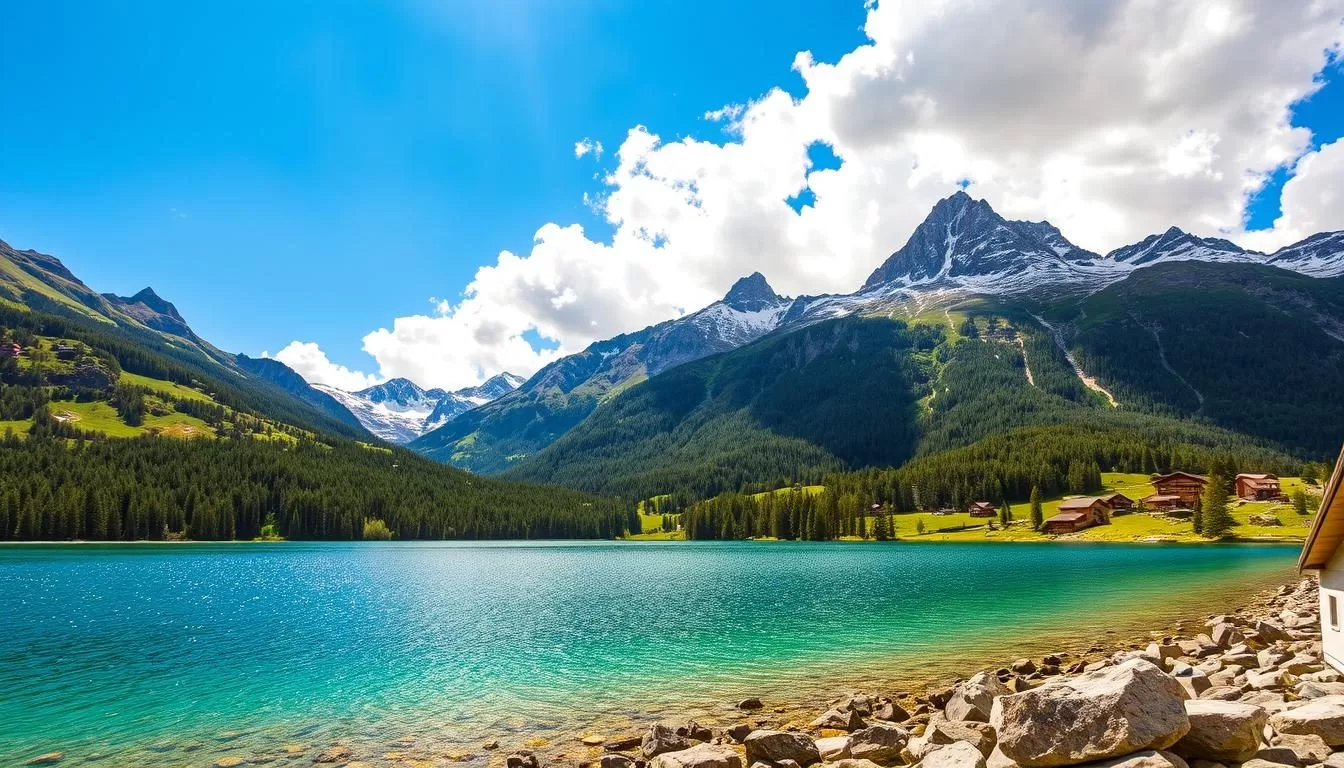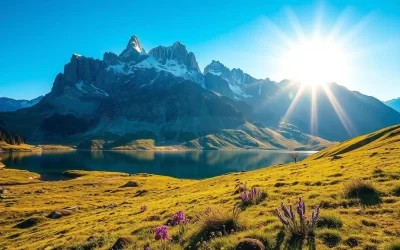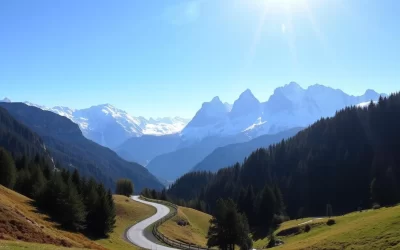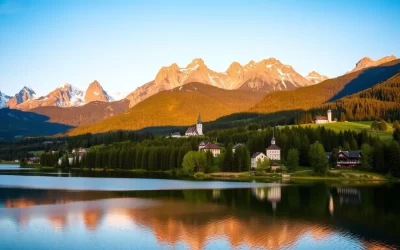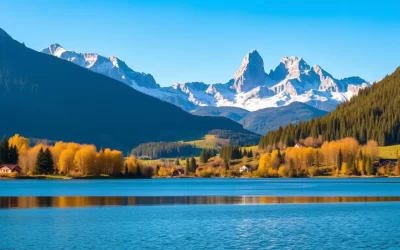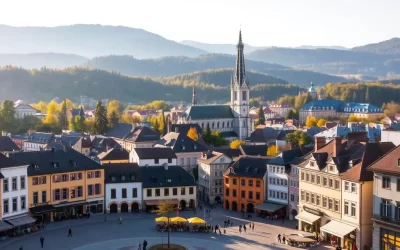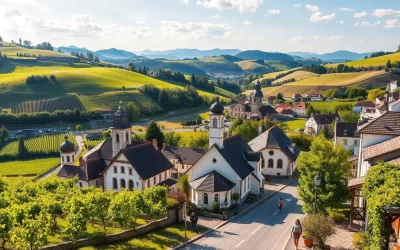Imagine standing amidst stunning alpine landscapes, surrounded by the majesty of Europe’s highest mountains and the serene beauty of pristine glaciers. Located in the heart of Austria, this vast protected area is a haven for nature lovers and adventure seekers alike.
You are about to explore one of Austria’s most treasured natural gems, spanning across three federal states: Salzburg, Tyrol, and Carinthia. With over 1,800 square kilometers of breathtaking scenery, you’ll discover a paradise of extraordinary biodiversity, featuring glacier-carved valleys, towering peaks, and alpine meadows teeming with life.
As you venture into this incredible region, get ready to experience the thrilling beauty of glaciers, the majesty of Austria’s highest mountain, Grossglockner, and the awe-inspiring Krimml Waterfalls. Whether you’re an avid hiker or simply seeking to immerse yourself in pristine alpine nature, this comprehensive guide will help you navigate the top experiences in Hohe Tauern.
Discovering Austria’s Largest National Park
As Austria’s largest national park, Hohe Tauern is a remarkable example of conservation efforts in the heart of the Alps. You are about to explore a vast and breathtaking region that showcases the best of Austria’s natural beauty.
Location and Geography
Hohe Tauern National Park is situated in the Central Eastern Alps, covering an impressive area of approximately 1,800 square kilometers across the federal states of Salzburg, Tyrol, and Carinthia. The park’s diverse geography is characterized by dramatic alpine landscapes, with elevations ranging from about 1,000 meters in the valleys to over 3,798 meters at the summit of Grossglockner. You will find the park’s landscape was shaped by glacial activity, resulting in a varied terrain of steep mountain slopes, U-shaped valleys, alpine meadows, and dense mountain forests. The region is also home to four major rivers: the Isel, Möll, Mur, and Salzach, which have carved out impressive valleys throughout the area.
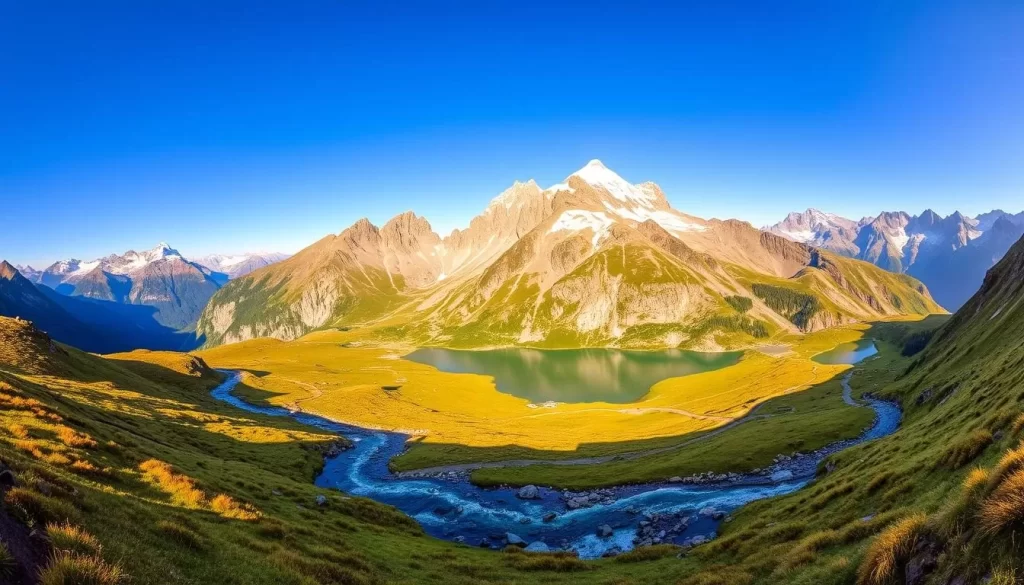
History and Conservation Efforts
Established in 1981, Hohe Tauern National Park represents a significant milestone in Austrian conservation efforts. The park operates under a zoning system, with a strictly protected core zone where nature is left untouched, and outer zones where sustainable traditional farming and tourism activities are permitted. You can be assured that conservation efforts focus on preserving biodiversity, protecting endangered species, maintaining traditional alpine farming practices, and promoting sustainable tourism throughout the region. By visiting Hohe Tauern, you are supporting these conservation efforts and contributing to the preservation of this alpine ecosystem for future generations.
Wildlife and Natural Wonders in Hohe Tauern
As you explore Hohe Tauern National Park, you’ll discover a rich tapestry of wildlife and natural wonders. The park serves as a haven for a diverse range of species, making it a paradise for nature enthusiasts.
Diverse Alpine Wildlife
The park is renowned for its iconic alpine wildlife, including the majestic golden eagle with a wingspan of up to 220 cm, and the bearded vulture, one of the largest birds in the region with a wingspan of up to 2.9 meters. The robust alpine ibex, with its powerful horns, is another impressive sight, while the diurnal chamois and alpine marmot are common inhabitants of the park’s meadows and rocky terrains.
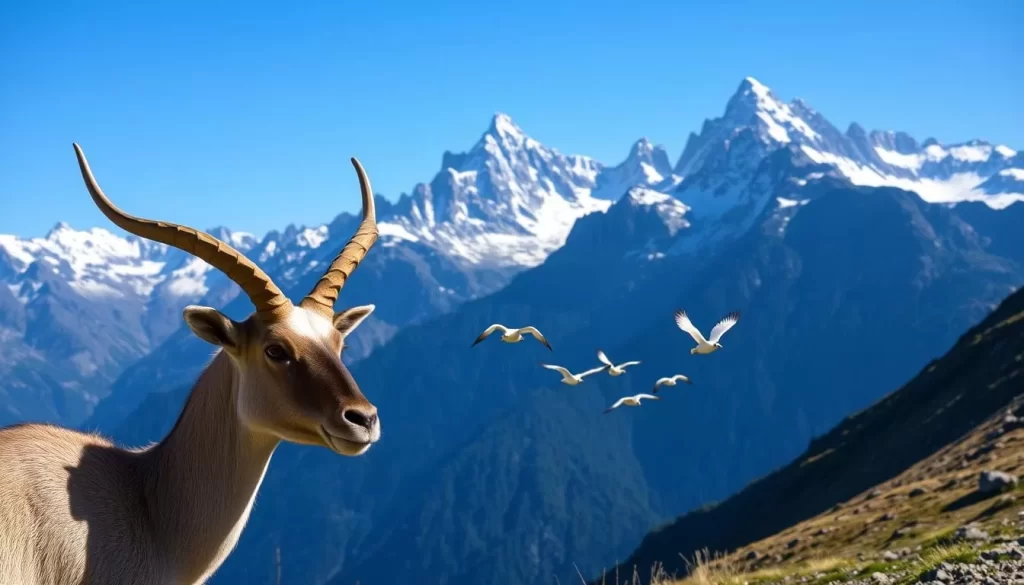
Flora and Alpine Meadows
The flora of Hohe Tauern is equally impressive, with over 1,800 plant species adapted to the harsh alpine conditions. The meadows burst with colorful wildflowers during the summer, creating vibrant carpets of color and providing a home for countless butterfly species. The symbolic edelweiss and vibrant alpine roses are among the many flowers that dot the landscape.
Glaciers and Mountain Peaks
The park’s glaciers and towering mountain peaks are awe-inspiring natural wonders. With 342 glaciers, including the Pasterze Glacier, the longest in the Eastern Alps, and 266 summits exceeding 3,000 meters, Hohe Tauern offers breathtaking views and a glimpse into the region’s geological history. The clear night skies above the park offer spectacular star-gazing opportunities.
| Feature | Description | Notable Facts |
|---|---|---|
| Wildlife | Diverse range of alpine species | Golden eagles, bearded vultures, alpine ibex |
| Flora | Over 1,800 plant species | Edelweiss, alpine roses, rare orchids |
| Glaciers & Peaks | 342 glaciers, 266 peaks over 3,000m | Pasterze Glacier, Grossglockner mountain |
Top Hiking Trails in National Park Hohe Tauern, Austria
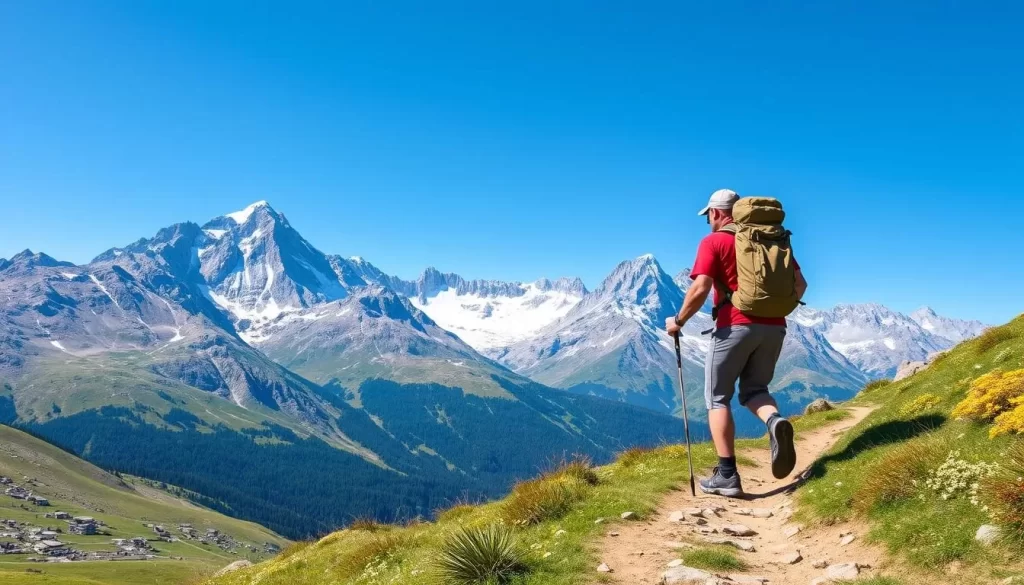
With nearly 500 kilometers of marked trails, Hohe Tauern National Park is a hiker’s paradise. The park offers a diverse range of hiking trails suitable for all skill levels, from easy nature walks to challenging multi-day treks.
The park’s trails provide a unique way to experience the breathtaking beauty of the Austrian Alps. Whether you’re looking for a leisurely hike or an adventurous journey, Hohe Tauern has something for everyone.
Gschlösstal Valley Trail
The Gschlösstal Valley Trail is a must-visit destination for any hiker. This trail leads you through one of the most beautiful valleys in the Eastern Alps, offering spectacular views of the Großvenediger glacier and surrounding peaks.
Lasörling High Trail
For a more challenging adventure, the Lasörling High Trail presents a multi-day trek traversing diverse landscapes, from ancient larch forests to high alpine terrain. This 57-kilometer route connects mountain huts along the way, with nearly 5,000 meters of elevation gain.
Katin Meadows Flower Hike
The Katin Meadows Flower Hike is a 5.5-kilometer route that takes you through one of the park’s most botanically rich areas. You’ll discover a stunning variety of alpine flowers, including tiger lilies and rare orchids, in the beautiful meadows.
Umbal Waterfalls Nature Trail
Don’t miss the Umbal Waterfalls Nature Trail, which follows the mighty Isel River through a series of impressive waterfalls. Educational stations along the trail explain the geological and ecological significance of this pristine waterway.
Many trails connect to traditional mountain huts where you can rest and refuel with authentic alpine cuisine. The park also offers guided hiking tours with knowledgeable rangers who can enhance your experience by pointing out wildlife and sharing insights about the park’s natural and cultural history.
Must-Visit Natural Attractions
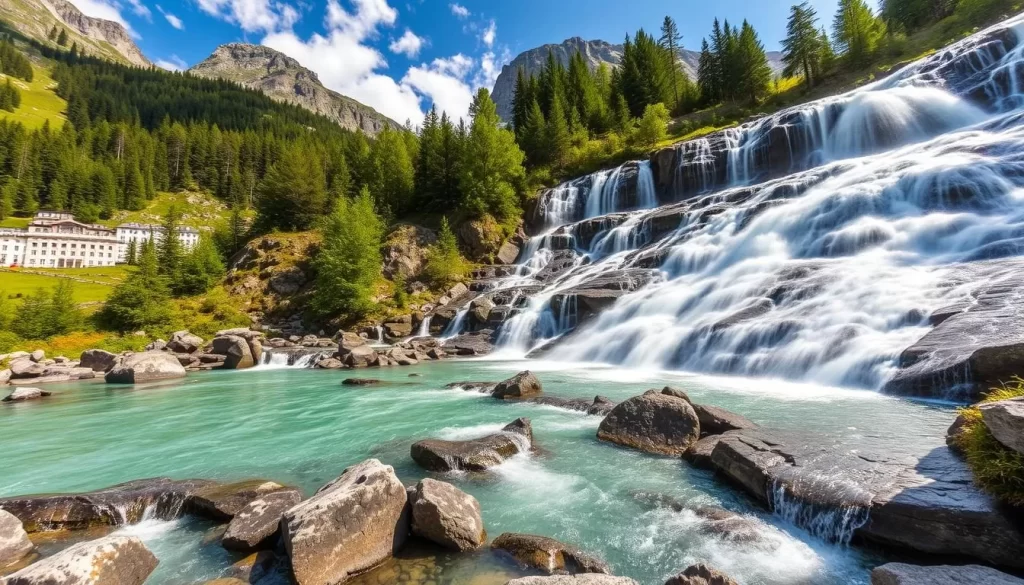
From majestic waterfalls to ancient forests, Hohe Tauern National Park is a treasure trove of natural attractions. The park is home to some of the most spectacular landscapes in the Austrian Alps, offering something for every nature lover.
Krimml Waterfalls
The Krimml Waterfalls are a must-see attraction in Hohe Tauern National Park, standing as Austria’s highest waterfalls and one of Europe’s most impressive cascades. Plunging 380 meters in three dramatic stages, you can experience their thundering power up close via well-maintained viewing platforms along an accessible trail.
Grossglockner High Alpine Road
The Grossglockner High Alpine Road is not just a way to travel but an attraction itself, offering 48 kilometers of panoramic driving with 36 challenging hairpin turns and breathtaking views of Austria’s highest mountain and surrounding glaciers. At designated viewpoints, you can use powerful telescopes to spot wildlife and get star-like views of distant peaks.
Pasterze Glacier
The Pasterze Glacier, the longest glacier in the Eastern Alps, provides a sobering glimpse of climate change as it continues to recede. You can view this massive ice formation from the Grossglockner High Alpine Road or hike closer for a more intimate experience.
Zedlacher Paradise
Zedlacher Paradise preserves an ancient larch forest approximately 600 years old, where you can follow a circular nature trail with seven educational stations explaining the forest ecosystem and its unique flora and fauna. The three-hour walk offers a peaceful immersion in old-growth forest, with opportunities to spot wildlife and enjoy the serene atmosphere.
In addition to these attractions, don’t miss the crystal-clear alpine lakes scattered throughout the park, including the picturesque Trelebitschsee, which reflects surrounding peaks in its mirror-like surface when the weather is calm.
Adventure Activities Beyond Hiking
Beyond hiking, Hohe Tauern National Park offers a diverse range of adventure activities that cater to different interests and skill levels. Whether you’re an adrenaline junkie or just looking to try something new, the park has something for everyone.
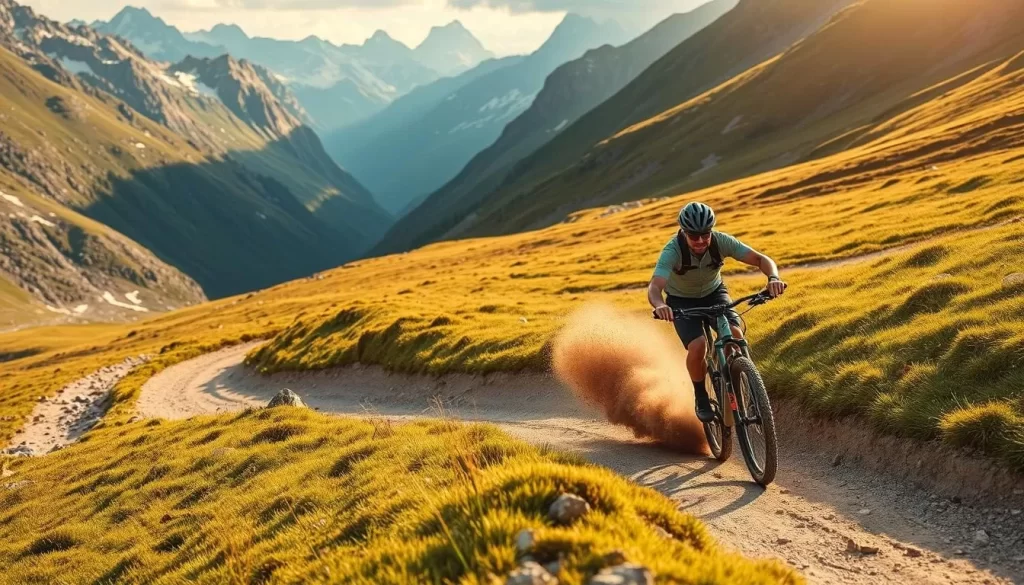
Mountain Biking Experiences
Mountain biking enthusiasts can explore dedicated trails like the Adler Single Trail, which starts at the top of the Kalser Gondelbahn cable car at 2,500 meters above sea level. This thrilling 3.7-kilometer descent takes you through flower-covered meadows, offering breathtaking views of the surrounding mountain peaks. The trail is rated S1 (easy) on the difficulty level, making it accessible for cyclists of various skill levels.
Wildlife Watching with Rangers
For a unique wildlife experience, join ranger-led wildlife watching tours that take you to prime observation spots at dawn or dusk when animals are most active. Professional guides provide high-quality spotting scopes and share their extensive knowledge about the park’s fauna, enhancing your overall experience.
Winter Activities in the Park
Winter transforms Hohe Tauern into a snow-covered wonderland where visitors can enjoy snowshoeing through silent forests, ski touring on pristine slopes, or cross-country skiing on groomed trails. You can also try ice climbing on frozen waterfalls or winter mountaineering with certified guides. On a clear night, take advantage of the star-gazing tours that offer spectacular views of constellations above snow-covered peaks, with the cable car providing easy access to high-altitude landscapes.
With its diverse range of activities, Hohe Tauern National Park is a true paradise for outdoor enthusiasts. From the thrill of mountain biking to the serenity of wildlife watching, and from the excitement of winter sports to the tranquility of a lake or river in the park, there’s something for everyone in this beautiful Austrian national park.
Cultural Experiences and Local Gastronomy
As you explore the Hohe Tauern region, you’ll discover a rich cultural heritage that’s deeply intertwined with the breathtaking Alpine landscape. The region’s unique blend of natural beauty and cultural richness is reflected in its traditional Alpine cuisine and the historic mountain huts that dot the landscape.
Traditional Alpine Cuisine
Traditional Alpine cuisine in the Hohe Tauern region is hearty and flavorful, designed to sustain mountain dwellers through harsh winters and long days of physical work. Local specialties such as Preiselbeerkrapfen (lingonberry donuts), Bauernschöpsernes (farmer’s mutton), and the famous apple strudel are a must-try, especially after a day of mountain activities. The cuisine reflects the region’s self-sufficient history, featuring locally sourced ingredients including mountain herbs, wild game, dairy products from alpine meadows, and preserved fruits and vegetables.
| Local Specialty | Description |
|---|---|
| Preiselbeerkrapfen | Lingonberry donuts, a sweet treat after a long hike |
| Bauernschöpsernes | Farmer’s mutton, a hearty dish to sustain through the day |
| Apple Strudel | A classic Austrian dessert, perfect with a cup of coffee |
Mountain Huts and Refuges
Mountain huts and refuges are an integral part of the Hohe Tauern experience, serving as both practical shelters for hikers and cultural institutions preserving alpine traditions. The Johannishütte is one of the oldest mountain refuges in the Eastern Alps, completely renovated in 1999 while maintaining its traditional character. It offers visitors a cozy atmosphere to rest and enjoy authentic mountain hospitality. Many refuges are still operated by local families who have maintained these mountain outposts for generations, sharing stories and knowledge about the region with visitors from around the world.
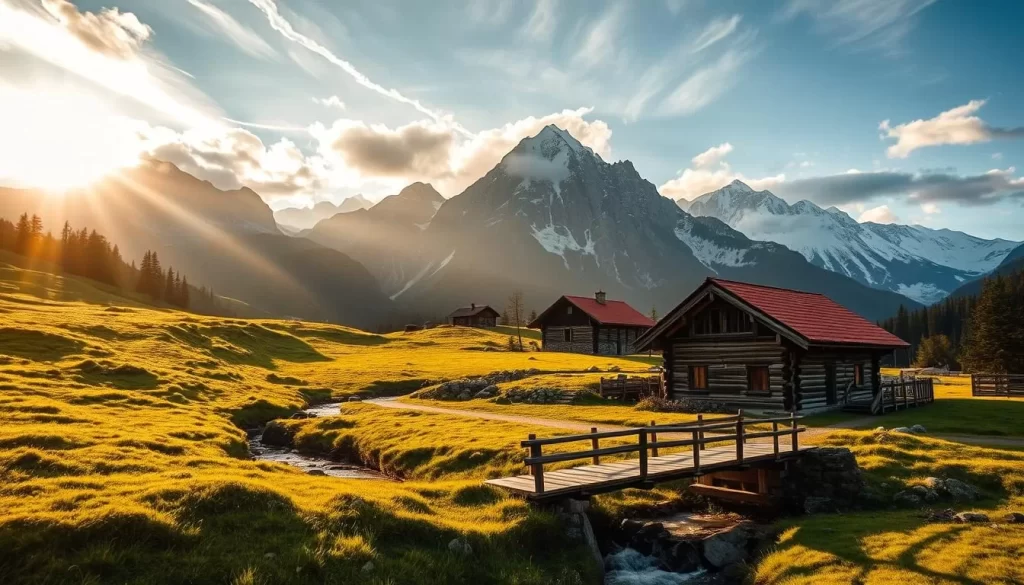
Staying overnight in a mountain hut gives you the opportunity to experience sunrise and sunset in the mountains, as well as the camaraderie that develops among hikers sharing meals and sleeping quarters. These mountain huts are strategically placed throughout the park, allowing visitors to plan multi-day hikes without carrying camping equipment or excessive food supplies.
Practical Information for Visitors
Before you embark on your adventure to Austria’s largest national park, here are some essential details to consider. Planning your visit to Hohe Tauern National Park involves understanding the best times to visit, where to stay, and how to get around.
Best Time to Visit
The best time to visit Hohe Tauern depends on your interests. Summer (June to September) is ideal for hiking and enjoying the blooming alpine meadows, while winter (December to March) transforms the landscape into a snow-covered wonderland perfect for winter sports. Late spring (May to early June) is also a great time, with waterfalls at their peak due to snowmelt and valleys beginning to green.
Accommodation Options
You can choose from a variety of accommodation options ranging from luxury hotels in gateway towns like Matrei and Lienz to family-run guesthouses, alpine chalets, and mountain huts within the park. For an authentic experience, consider staying at one of the park’s mountain refuges, located at elevations between 1,500 and 2,800 meters above sea level.
Transportation and Access Points
The park is accessible across three Austrian states, with major gateways including Matrei in East Tyrol, Kals am Grossglockner, and Heiligenblut in Carinthia. While a car provides flexibility, you can reduce your environmental impact by taking the train to gateway cities like Lienz and then using local buses or renting a car for specific journeys.
Guided Tours and Ranger Programs
Hohe Tauern National Park offers an extensive program of guided tours and ranger activities throughout the year, including wildlife watching, botanical excursions, geology walks, and cultural heritage tours. These programs provide deeper insights into the park’s natural treasures and are a great way to enhance your visit.
Preserving the Alpine Wilderness for Future Generations
With its diverse landscapes and rich biodiversity, Hohe Tauern National Park stands as a testament to the importance of preserving our natural heritage. The park is home to one of the largest areas of uninterrupted old-growth forest in Austria, featuring dense, primeval beech forests that are a haven for plants and wildlife.
You can contribute to preservation efforts by respecting park regulations and supporting sustainable tourism. The park’s educational programs foster a deeper connection between visitors and nature, creating advocates for conservation. By working together, we can ensure that Hohe Tauern National Park continues to thrive, protecting its glaciers, alpine meadows, and diverse wildlife for generations to come.
The above is subject to change.
Check back often to TRAVEL.COM for the latest travel tips and deals.
